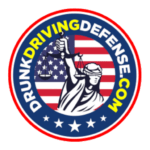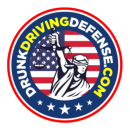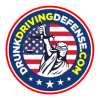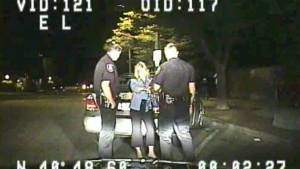Field Sobriety Tests Are Voluntary!
Drivers suspected of DUI or DWI are routinely asked by police officers to perform one or more field sobriety tests. These voluntary drunk driving tests were developed to assist law enforcement officers in making roadside determinations as to whether a motorist is under the influence of alcohol or drugs. Through the performance of these drunk driving tests or evaluations, the officer subjectively determines how the motorist reacts to and performs the requested field sobriety test.
Almost every knowledgeable DUI/DWI attorney will say to you: Don’t attempt ANY field sobriety tests – EVER! That is because many studies have concluded that field sobriety tests are designed for you to fail!
Your alleged poor performance on drunk driving tests may provide the probable cause an officer needs to arrest you for impaired driving, and may also become part of the police evidence used to later convict you at your DUI trial. Therefore, it is very important that your DUI defense attorney knows as much or more about these field sobriety tests as the police, if he or she is going to defend you successfully.
One sure way to know that your attorney is up to date: Is your lawyer NHTSA certified? Are they certified as a student – or as an instructor? Ask him or her. This training has been available to DUI defense attorneys since 1994, and over 1,000 DUI attorneys nationwide have received the training. William C. Head, a superb Atlanta DUI lawyer, is an SFST instructor, and has taught or helped teach these roadside evaluations to over 300 other DUI criminal defense lawyers.
Only three field sobriety tests have been scientifically studied and represented to have any measure of reliability in helping an officer predict whether a subject is above a certain legal blood alcohol content limit. These three tests are (1) the walk and turn [WAT] test, (2) the one leg stand [OLS] test, and (3) the horizontal gaze nystagmus [HGN] test. These tests are usually followed by the police officer giving you a DUI breath test.
Starting in the 1970s, NHTSA began studying and funding field sobriety tests to see if any of the dozens of police exercises had any correlation to showing if a drinking driver had a blood alcohol level of 0.10 grams percent or higher. The studies determined that only the three named evaluations had any reliable correlation better than 50-50 to identify a person having a BAC of 0.10% or more.
The HGN evaluation, when performed correctly on proper subjects, had a 77% claimed reliability rating. The WAT exercise, when conducted properly on a qualified subject on a dry, level surface, was found to be 68% reliable. The OLS exercise, when conducted properly, on a qualified subject on a level, dry surface and under proper instructions and where correctly demonstrated and scored, reportedly yields about 65% reliability. Cumulatively, if all are done correctly, up to 83% correlation to a BAC of 0.10% or more may be expected.
Knowledgeable criminal defense lawyers know that 98% or more of the officers administering these evaluations do them wrong, conduct them in a manner not approved by the SFST manual or grade the evaluations improperly. When done incorrectly, these evaluations have ZERO predicted reliability. Hence, a top-notch DUI/DWI lawyer can cross-examine the arresting officer using his/her OWN training materials that the federal government and your state government have approved.
Recent research and scientific review of the testing protocols and scoring methodology have brought the NHTSA Standardized Field Sobriety Tests (SFSTs) into serious question. Courts across America are taking a closer look at the original research, to see if proper scientific methods were employed in the initial research. More and more courts are now saying no to these questions. In a recent New Mexico case, a high-level court has declared that the person who developed the tests (Dr. Marcelline Burns) was not qualified to testify as an expert witness about the scientific principles behind the HGN test. (Lasworth v. State, 42 P.2d 844 (N.M. App. 2001).)
The History of Standardized Field Sobriety Tests
Prior to the 1980s and NHTSA’s studies on field testing, police officers across America were taught a wide variety of tests to be given to persons stopped for suspected drunk driving. Most of these tests had never been studied to determine fairness or accuracy in detecting either impaired drivers or drivers who were operating a vehicle while their BAC level was 0.10 BAC or more. Moreover, no standardized method (that is, not being done the same way by officers who used these tests) of scoring or grading these tests had been attempted. Simply stated, the decision to arrest was based upon the subjective whim of the officer. Mistakes were made in a large percentage of cases.
Tests given by some officers may have included reciting the alphabet (or a portion thereof), picking up coins off the ground, or touching index fingers to the tip of the nose while the person’s eyes were closed and head tilted back. Some involved strange, one-legged tapping on the roadway with a raised foot (similar to what that famous television horse, Mr. Ed, used to do). These made-up tests were administered to subjects without any scientific or empirical basis for reliability in detecting an impaired driver. These tests were designed for failure, not for fairness. Even worse, police officers often forced people to perform these voluntary evaluations, thereby violating these citizens’ rights.
Some non-standardized tests were so ridiculous and difficult that proof of non-validity was easy with almost any jury or judge. Today, officers who lack NHTSA training invariably cannot cite any studies or scientific research which validated their tests, the scoring (e.g., pass or fail), or their testing methods. Almost always, no scoring system is used on tests that do not adhere to NHTSA guidelines. If non-standardized tests are used, the number of errors that are required for a subject to fail is totally subjective with each officer. Hence, the untrained officer is usually an easy target for a skilled and knowledgeable criminal defense attorney who knows the limitations of these field tests.
The Problem With the “Science” of Sobriety Tests
A great rift exists among scientific experts on the question of whether field sobriety tests are “scientific.” For example, Georgia’s appellate courts have blown hot and cold on this subject. Torrance v. State, 217 Ga. App. 562, 458 S.E.2d 495 (1995); Manley v. State, 206 Ga. App. 281, 424 S.E.2d 818 (1992); Foster v. State, 204 Ga. App. 632, 420 S.E.2d 78 (1992); Crawford v. City of Forest Park, 215 Ga. App. 234, 450 S.E.2d 237 (1994) [holding that field tests given by the arresting officer were not “a scientific procedure,” but “simply a behavioral observation on the officer’s part”]; Hassell v. State, 212 Ga. App. 432, 442 S.E.2d 261 (1994); Hawkins v. State, 223 Ga. App. 34, 476 S.E.2d 803 (1996). Challenges to field sobriety tests based upon proof of a scientific foundation by an expert have been rejected by the court of appeals. Druitt v. State, 225 Ga. App. 150, 483 S.E.2d 117 (1997). See also Padgett v. State, 230 Ga. App. 659, 498 S.E.2d 84 (1998), where the court of appeals held that field sobriety tests are merely dexterity exercises and the word “tests” is a misnomer.
The reason that most credible scientists across America (and in other countries) are unwilling to categorize field tests — even NHTSA’s tests — as being scientific is that too many variables are involved in roadside testing to ever eliminate pure chance and non-controlled circumstances from the equation (e.g., environmental conditions such as lighting and roadway slope). Numerous states, including Texas, Alabama, and Mississippi, do not permit HGN evidence to be admitted at trial. The reason behind this is that these party games (as noted Swedish scientist Dr. A.W. Jones has called them) do not pass well-established rules f evidence (the court rules for determining when certain types of information may be told to the jury) for scientifically acceptable tests.
Even NHTSA admits that under optimal conditions (i.e., in an air-conditioned, well-lighted room) 35% of sober, drug-free subjects get inaccurate results on the one-leg stand test, 32% of sober subjects get flawed results on the walk and turn, and 23% of sober subjects are inaccurately said to be over the legal limit on the horizontal gaze nystagmus test. By comparison, polygraph (lie detector) tests are more than 90% accurate when conducted by a qualified operator), and (absent a stipulation by both parties) is still not permitted into evidence by most courts.
These Are Voluntary Drunk Driving Tests!
Only a small number of states have tried to pass laws to make the field sobriety tests not 100% voluntary. These states typically will assess a monetary fine against someone who says no to these voluntary tests. So what? I tell all my friends and relatives and clients: Don’t attempt these bogus tests! Other states have said that the State Constitution provides that no person can be compelled to take such drunk driving tests.
Case law in virtually all U.S. jurisdictions indicates that if a person is being detained or is in custody, no field tests can be given without first providing Miranda advisements (i.e., right to remain silent; right to an attorney; if you can’t afford an attorney, one will be appointed for you). State v. O’Donnell, 225 Ga. App. 502, 484 S.E.2d 313 (1997). Hence, the new focus for defense attorneys is to establish that some sort of “custody” or detention has occurred prior to the field tests. See also Price v. State, 269 Ga. 222, 498 S.E.2d 262 (1998).
However, many appellate courts have bent over backward to ignore clear signs of custody. For example, despite guns being drawn on a driver, the Georgia Court of Appeals (in Hassell v. State—see citation above) ruled that this was not custody. Of course, this is a ridiculous ruling, but part of Georgia law, regardless.
Other courts have stood tall and said if NHTSA tests are supposed to be scientific, then they must be done correctly. The previously mentioned Lasworth case from the New Mexico Court of Appeals is just such a case.
The Supreme Court of Ohio recently held that the officer’s failure to follow NHTSA training in administering field sobriety exercises was a factor in determining the admissibility of the test. State v. Homan, 732 N.E.2d 952 (Ohio 2000). In Homan, an NHTSA-trained officer’s admitted failure to administer the field sobriety exercises in strict compliance with NHTSA’s standardized testing procedures invalidated (and excluded) all of the State’s evidence about the field sobriety exercises. The Homan court made the following findings regarding the unreliability of field tests not conducted in compliance with NHTSA procedure:
When field sobriety testing is conducted in a manner that departs from established methods and procedures, the results are inherently unreliable. In an extensive study, the National Highway Traffic Safety Administration (NHTSA) evaluated field sobriety tests in terms of their utility in determining whether a subject’s blood‘alcohol concentration is below or above the legal limit. The NHTSA concluded that field sobriety tests are an effective means of detecting legal intoxication only when: the tests are administered in the prescribed, standardized manner[,] . . . the standardized clues are used to assess the suspect’s performance[, and] . . . the standardized criteria are employed to interpret that performance. National Highway Traffic Safety Adm., U.S. Dept. of Transp., HS 178 R2/00, DWI Detection and Standardized Field Sobriety Testing, Student Manual (2000), at VIII‘3. According to the NHTSA, [i]f any one of the standardized field sobriety test elements is changed, the validity is compromised. Id. Experts in the areas of drunk driving apprehension, prosecution, and defense all appear to agree that the reliability of field sobriety test results does indeed turn upon the degree to which police comply with standardized testing procedures. See, e.g., 1 Erwin, Defense of Drunk Driving Cases (3 Ed.1997), Section 10.06[4]; Cohen & Green, Apprehending and Prosecuting the Drunk Driver: A Manual for Police and Prosecution (1997), Section 4.01.
Roadside Sobriety Tests
A portable breath testing device may be used by police officers in determining whether or not a motorist is under the influence of alcohol. Some states have banned the use of these voluntary non-evidential screening devices. Non-evidential means that the digital number can’t be used against you in court. Some states have ruled that the only place at trial that these can be used is at a pre-trial hearing at which probable cause for arrest is involved.
Like other field tests, these devices are used on the roadway. Often, police officers do not regularly check the devices for calibration. Furthermore, the manufacturer’s instructions (e.g., failing to observe a 15-minute deprivation period, waiting at least 4 minutes between tests, or clearing the prior test results) for proper use are routinely ignored.
Some states have started using these roadside testers as evidential tests. This is accomplished when a small printer is attached to the breath test apparatus. Unless your state uses such a device as an OFFICIAL state-mandated breath test, no person should ever submit to these devices and risk a false positive result and almost certain arrest. Politely DECLINE to give this voluntary sample, if it is not the official state test.
The Newest Voodoo Science: The DEC Program To Identify Drug Use
Government studies have revealed that many drivers are under the influence of drugs, or a combination of alcohol and drugs. To combat this, an effort has been mounted since the early 1990s to add some type of training to the police officer’s arsenal that will assist in identifying drug-impaired individuals. Hence, NHTSA has created the “Drug Evaluation and Classification” (DEC) Program. A DEC officer does not typically work in the field (i.e., making traffic arrests), or make the initial arrest of an impaired driver. A DEC officer is called in after a subject either shows a low score on an alcohol test or otherwise smells like or acts like he/she has been using drugs. The proper procedure is for the DEC officer to give Miranda warnings to the person (already in custody), and then start the evaluation for drug usage. SIMPLE RULE: SAY NO! You have just been told of your constitutional rights—USE THEM! Say nothing and do nothing beyond saying, I’d like to speak to an attorney.
The function of DEC is to ascertain:
- (a) Whether the person is impaired by something;
- (b) If impaired, is it from drugs as opposed to alcohol;
- (c) If the impairment appears to be from drugs, what “manifestations” or visible indicia of impairment would indicate the TYPE or CATEGORY of drug being used?
As opposed to trying to target a single “impairing” chemical, the DEC process seeks to “recognize” indications of any of seven broad categories of drugs:
- Central nervous system depressants, such as Valium, Xanax or alcohol;
- Central nervous system stimulants (e.g., crack or powder cocaine);
- Hallucinogens, such as L.S.D.;
- Phencyclidine, such as P.C.P. (which can manifest itself as a stimulant, depressant or hallucinogen, and is highly unpredictable);
- Inhalants, such as glues or other aerosol products, which block the passage of oxygen to the brain;
- Narcotic analgesics, such as Demerol, Dilaudid, opium, heroin, Methadone and other powerful pain relievers; and
- Cannabis (marijuana and its “family” of psychoactive plants.)
The hope of the police is that these DEC evaluations can be used in court to identify impairment from drugs even if the person refuses all blood and urine testing. Absent a blood or urine test or an admission of recent drug use, opinion testimony must be based upon something more than a wild guess or speculation. Ironically, NHTSA designed the DEC Program for post-arrest investigation, to be done in a carefully controlled environment (as opposed to field evaluation).
Numerous task force officers across America have taken IACP-approved DEC classes to enable them to identify a subject impaired by drugs. IACP is the acronym for the International Association of Chiefs of Police. Sometimes referred to as DREs or DRTs (drug recognition experts or drug recognition technicians), these officers utilize a series of simple evaluations and observations to help them identify individuals impaired by drugs.
Interestingly, even the IACP recognizes the limitations of the DEC program. For example, the agency recognizes that DEC-trained officers cannot identify exactly what drug (or drugs) a person is on. Only one of the seven broad categories listed might be identified if the person has been fully trained and certified. IACP has emphasized the need for an analytical chemical test (such as a GC-MS test) to confirm the officer’s suspicions about drug use. This is because anything less than a chemical test is just an educated GUESS. The law does not support guesswork in criminal trials, because the State must prove guilt beyond a reasonable doubt.
The DEC process includes an alcohol screening evaluation on a roadside screening device such as an Alco-Sensor. It also includes administering the NHTSA standardized field sobriety tests. The twelve components of the DEC process include:
- A breath alcohol screening test to determine an estimated BAC level;
- Interviewing the arresting officer, to see what was seen or heard in earlier contact;
- The preliminary examination, including questions to determine pre-existing injury, or the existence of a health or mental condition that may mimic drug use;
- Eye examination, using both horizontal and vertical nystagmus tests, plus checking to see if the eyes converge properly;
- Divided attention tests, including walk and turn, one-leg stand, finger to nose and the Romberg balance test;
- Vital signs examination, checking pulse rate, blood pressure and temperature;
- Dark room examination, including measurement of pupil size, reaction of the eyes to light and tell-tale evidence of ingestion of drugs by nose or by mouth;
- Examination of muscle tone — Depending on the type of drug used, muscles can be rigid or flaccid. Examination is performed from the bicep to the wrist;
- Looking for injection sites, (i.e., needle marks or tracks) on the arms, neck, legs, etc.;
- Questioning the suspect — After giving all the required constitutional and statutory advisements, ask the subject questions concerning the drug or drugs suspected to be involved;
- The opinion of the DEC evaluator is used to summarize the findings and to fill out reports designed to document the observed facts which support the officer’s conclusions; and
- A toxicological examination to provide scientific, admissible evidence to substantiate the DEC evaluator’s conclusions. (This assumes that a person submits to the test offered, where an option to NOT do so exists.)
A properly equipped DEC officer will have these items with him or her:
- (a) blood pressure kit;
- (b) an electronic aneroid thermometer;
- (c) a pupillometer (to measure the size of the subject’s pupils);
- (d) a preliminary alcohol screening device, such as an Alco-Sensor; and
- (e) access to a dark room.
The DEC protocol teaches officers to not only look for either contraband (illegal) or controlled substances (i.e., those drugs which cannot be purchased without a prescription), but to take note of over-the-counter medications that the subject has ingested which may have caused or contributed to the suspect’s impairment. Certain allergy and cold medicines have been determined by the American Medical Association and FDA to be particularly unsafe for persons who are driving. These include Benadryl, Allerdryl, Contac Severe Cold Formula, Vicks Nyquil, Trifed, Phenergan, and others.
Although the use of DEC evaluations by DRE officers requires extensive training, this is a wave of the future. Decisions in several states have upheld DEC evaluations by DRE officers, utilizing both a Daubert analysis and a Frye analysis of admissibility. Daubert and Frye are well-known federal cases that have carved out the rules of when and after what type of judicial review scientific evidence can be admitted at a trial. About 45 of the 50 states follow one standard or the other. See State v. Klawitter, 518 N.W.2d 577 (Minn. 1994) [using a Daubert analysis] and People v. Quinn, 580 N.Y.S.2d 818 (Suffolk County Dist. Ct. 1991), rev’d and remanded on other grounds, 607 N.Y.S.2d 534 (Sup. Ct. App. Term 1993) [using a Frye analysis]. See State v. Sampson, 6 P.3d 543 (Or.App. 2000) for a fascinating analysis of prior DEC admissibility in various states.
As with other pro-prosecution types of scientific evidence, expect courts to overrule objections to DEC evaluations based on highly discretionary trial court review of proper evidence. The need of the State to make our highways safe will likely outweigh the voodoo nature of the DEC opinion evidence. The best hope for the defense is that a fair-minded judge will look at the highly irregular nature of this evidence and declare the State has not laid a proper foundation for this scientific evidence. Therefore, this evidence is excluded.
Further Reading
For more information on field sobriety tests, take a look at one of our articles detailing specific aspects of these DUI tests below:
- DUI Tests
- Field Sobriety Tests in the United States
- Should I Take Field Sobriety Tests?
- What Happens If I Refuse the DUI Tests?
- If I Don’t Take Field Sobriety Tests, Will I Lose My License?
- Are Field Sobriety Tests Reliable?
- Are Police Properly Trained On Field Sobriety Tests?
- Can Field Sobriety Test Errors Help Me?
Find The Top-Rated DUI Lawyers Near You
We have listings for the top DUI lawyers in all 50 states and the District of Columbia. Find the best DUI lawyer for you by clicking on your state here.



